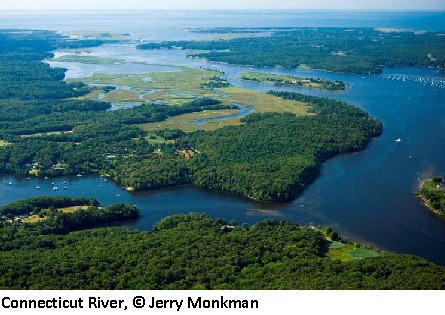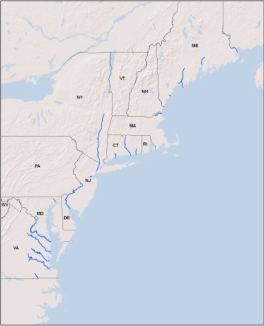The tidal large river macrogroup consists of the following aquatic habitat types:
Tidal Large Rivers


Distribution:
CT, DE, DC, ME, MD, MA, NJ, NY, PA, VA. 1,026 miles of habitat in the region, of which 15.9% of the 100m riparian buffer is conserved.
Description:
Slow moving, large, deep, tidally influenced rivers. These very large rivers connect directly to the ocean or to large estuaries and their water flow and level fluctuates with the tides. They have large upstream watersheds >1000 sq.mi and average bankfull widths of over 300 feet. In the river there is a vertical salinity gradient, with a surface layer of fresh water (salinity less than 0.5 ppt) floating over a deeper layer of brackish water (salinity between 0.5 and 18.0ppt). Salinities at any one place in the river may fluctuate as the tides flow in and out because the "salt wedge" of brackish water alternately rises and falls with the tides. Vegetational and faunal communities found in and along the river are determined by both depth and salinity. Commonly associated communities include brackish and salt marshes, swamps, and mudflats. Most of these rivers have extensive salt marshes an/or intertidal sand and mud flats at their mouths. These rivers and their associated estuaries support a rich diversity of plant and animals and serve as the primary nursery area for many marine, estuarine, and anadromous fishes.
Download the
pdf for this habitat for information about species, crosswalks to state names, and condition of this habitat.